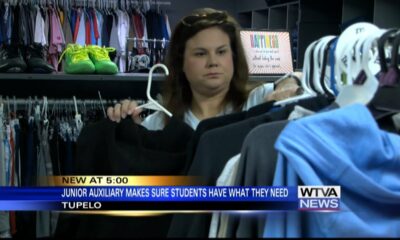Kaiser Health News
Four Years After Shelter-in-Place, Covid-19 Misinformation Persists
Kwasi Gyamfi Asiedu, PolitiFact
Mon, 01 Apr 2024 09:00:00 +0000
From spring break parties to Mardi Gras, many people remember the last major “normal” thing they did before the novel coronavirus pandemic dawned, forcing governments worldwide to issue stay-at-home advisories and shutdowns.
Even before the first case of covid-19 was detected in the U.S., fears and uncertainties helped spur misinformation's rapid spread. In March 2020, schools closed, employers sent staff to work from home, and grocery stores called for physical distancing to keep people safe. But little halted the flow of misleading claims that sent fact-checkers and public health officials into overdrive.Some people falsely asserted covid's symptoms were associated with 5G wireless technology. Faux cures and untested treatments populated social media and political discourse. Amid uncertainty about the virus's origins, some people proclaimed covid didn't exist at all. PolitiFact named “downplay and denial” about the virus its 2020 “Lie of the Year.”
Four years later, people's lives are largely free of the extreme public health measures that restricted them early in the pandemic. But covid misinformation persists, although it's now centered mostly on vaccines and vaccine-related conspiracy theories.
PolitiFact has published more than 2,000 fact checks related to covid vaccines alone.
“From a misinformation researcher perspective, [there has been] shifting levels of trust,” said Tara Kirk Sell, a senior scholar at the Johns Hopkins Center for Health Security. “Early on in the pandemic, there was a lot of: ‘This isn't real,' fake cures, and then later on, we see more vaccine-focused mis- and disinformation and a more partisan type of disinformation and misinformation.”
Here are some of the most persistent covid misinformation narratives we see today:
A Loss of Trust in the Vaccines
Covid vaccines were quickly developed, with U.S. patients receiving the first shots in December 2020, 11 months after the first domestic case was detected.
Experts credit the speedy development with helping to save millions of lives and preventing hospitalizations. Researchers at the University of Southern California and Brown University calculated that vaccines saved 2.4 million lives in 141 countries starting from the vaccines' rollout through August 2021 alone. Centers for Disease Control and Prevention data shows there were 1,164 U.S. deaths provisionally attributed to covid the week of March 2, down from nearly 26,000 at the pandemic's height in January 2021, as vaccines were just rolling out.
But on social media and in some public officials' remarks, misinformation about covid vaccine efficacy and safety is common. U.S. presidential candidate Robert F. Kennedy Jr. has built his 2024 campaign on a movement that seeks to legitimize conspiracy theories about the vaccines. PolitiFact made that its 2023 “Lie of the Year.”
PolitiFact has seen claims that spike proteins from vaccines are replacing sperm in vaccinated males. (That's false.) We've researched the assertion that vaccines can change your DNA. (That's misleading and ignores evidence). Social media posts poked fun at Kansas City Chiefs tight end Travis Kelce for encouraging people to get vaccinated, asserting that the vaccine actually shuts off recipients' hearts. (No, it doesn't.) And some people pointed to an American Red Cross blood donation questionnaire as evidence that shots are unsafe. (PolitiFact rated that False.)
Experts say this misinformation has real-world effects.
A September 2023 survey by KFF found that 57% of Americans “say they are very or somewhat confident” in covid vaccines. And those who distrust them are more likely to identify as politically conservative: Thirty-six percent of Republicans compared with 84% of Democrats say they are very or somewhat confident in the vaccine.
Immunization rates for routine vaccines for other conditions have also taken a hit. Measles had been eradicated for more than 20 years in the U.S. but there have been recent outbreaks in states including Florida, Maryland, and Ohio. Florida's surgeon general has expressed skepticism about vaccines and rejected guidance from the CDC about how to contain potentially deadly disease spread.
The vaccination rate among kindergartners has declined from 95% in the 2019-20 school year to 93% in 2022-23, according to the CDC. Public health officials have set a 95% vaccination rate target to prevent and reduce the risk of disease outbreaks. The CDC also found exemptions had risen to 3%, the highest rate ever recorded in the U.S.
Unsubstantiated Claims That Vaccines Cause Deaths or Other Illness
PolitiFact has seen repeated and unsubstantiated claims that covid vaccines have caused mass numbers of deaths.
A recent widely shared post claimed 17 million people had died because of the vaccine, despite contrary evidence from multiple studies and institutions such as the World Health Organization and CDC that the vaccines are safe and help to prevent severe illness and death.
Another online post claimed the booster vaccine had eight strains of HIV and would kill 23% of the population. Vaccine manufacturers publish the ingredient lists; they do not include HIV. People living with HIV were among the people given priority access during early vaccine rollout to protect them from severe illness.
Covid vaccines also have been blamed for causing Alzheimer's and cancer. Experts have found no evidence the vaccines cause either conditions.
“You had this remarkable scientific or medical accomplishment contrasted with this remarkable rejection of that technology by a significant portion of the American public,” said Paul Offit, director of the Vaccine Education Center at the Children's Hospital of Philadelphia.
More than three years after vaccines became available, about 70% of Americans have completed a primary series of covid vaccination, according to CDC figures. About 17% have gotten the most recent bivalent booster.
False claims often pull from and misuse data from the Vaccine Adverse Event Reporting System. The database, run by the CDC and the FDA, allows anybody to report reactions after any vaccine. The reports themselves are unverified, but the database is designed to help researchers find patterns for further investigation.
An October 2023 survey published in November by the Annenberg Public Policy Center at the University of Pennsylvania found 63% of Americans think “it is safer to get the covid-19 vaccine than the covid-19 disease” — that was down from 75% in April 2021.
Celebrity Deaths Falsely Attributed to Vaccines
Betty White, Bob Saget, Matthew Perry, and DMX are just a few of the many celebrities whose deaths were falsely linked to the vaccine. The anti-vaccine film “Died Suddenly” tried to give credence to false claims that the vaccine causes people to die shortly after receiving it.
Céline Gounder, editor-at-large for public health at KFF Health News and an infectious disease specialist, said these claims proliferate because of two things: cognitive bias and more insidious motivated reasoning.
“It's like saying ‘I had an ice cream cone and then I died the next day; the ice cream must have killed me,” she said. And those with preexisting beliefs about the vaccine seek to attach sudden deaths to the vaccine.
Gounder experienced this personally when her husband, the celebrated sports journalist Grant Wahl, died while covering the 2022 World Cup in Qatar. Wahl died of a ruptured aortic aneurysm but anti-vaccine accounts falsely linked his death to a covid vaccine, forcing Gounder to publicly set the record straight.
“It is very clear that this is about harming other people,” said Gounder, who was a guest at United Facts of America in 2023. “And in this case, trying to harm me and my family at a point where we were grieving my husband's loss. What was important in that moment was to really stand up for my husband, his legacy, and to do what I know he would have wanted me to do, which is to speak the truth and to do so very publicly.”
Out-of-Control Claims About Government Control
False claims that the pandemic was planned by government leaders and those in power abound.
At any given moment, Microsoft Corp. co-founder and philanthropist Bill Gates, World Economic Forum head Klaus Schwab, or Anthony Fauci, former director of the National Institute of Allergy and Infectious Diseases, are blamed for orchestrating pandemic-related threats.In November, Rep. Matt Rosendale (R-Mont.) falsely claimed Fauci “brought” the virus to his state a year before the pandemic. There is no evidence of that. Gates, according to the narratives, is using dangerous vaccines to push a depopulation agenda. That's false. And Schwab has not said he has an “agenda” to establish a totalitarian global regime using the coronavirus to depopulate the Earth and reorganize society. That's part of a conspiracy theory that's come to be called “The Great Reset” that has been debunked many times.
The United Nations' World Health Organization is frequently painted as a global force for evil, too, with detractors saying it is using vaccination to control or harm people. But the WHO has not declared that a new pandemic is happening, as some have claimed. Its current pandemic preparedness treaty is in no way positioned to remove human rights protections or restrict freedoms, as one post said. And the organization has not announced plans to deploy troops to corral people and forcibly vaccinate them. The WHO is, however, working on a new treaty to help countries improve coordination in response to future pandemics.
——————————
By: Kwasi Gyamfi Asiedu, PolitiFact
Title: Four Years After Shelter-in-Place, Covid-19 Misinformation Persists
Sourced From: kffhealthnews.org/news/article/fact-check-covid-19-misinformation-persists-vaccines-deaths/
Published Date: Mon, 01 Apr 2024 09:00:00 +0000
Did you miss our previous article…
https://www.biloxinewsevents.com/for-profit-companies-open-psychiatric-hospitals-in-areas-clamoring-for-care/
Kaiser Health News
Union With Labor Dispute of Its Own Threatens to Cut Off Workers’ Health Benefits
Phil Galewitz, KFF Health News
Fri, 26 Jul 2024 09:00:00 +0000
The National Education Association, the nation's largest union, is threatening to cut off health insurance to about 300 Washington, D.C.-based workers on Aug. 1 in an effort to end a bitter contract dispute.
It's a tactic some private employers have used as leverage against unionized workers that has drawn scrutiny from congressional Democrats and is prohibited for state employers in California. Experts on labor law say they've never seen a union make the move against its own workers.
“This is like a man-bites-dog situation where the union is now in a position as the employer,” said Paul Clark, a professor of labor and employment relations at Penn State University. “It's not a good look for a union.”
NEA workers with pressing health needs are worried but say they won't fold. Joye Mercer Barksdale, a writer on the NEA's government relations team, said she needs coverage for a medical procedure to address atrial fibrillation, a cardiac disorder. “This is insane for the NEA to use our health benefits as a bargaining chip,” she said.
But Barksdale said the threat isn't enough to force her to agree to an unacceptable contract. “I am not ready to give in,” she said.
The NEA Staff Organization, the union representing workers at the NEA's headquarters, launched a strike on July 5 in Philadelphia, during the union's annual delegate assembly. It was its second walkout this summer as the two parties negotiate a new contract, navigating sticking points such as wages and remote work.
In response, the NEA ended the conference early. President Joe Biden was supposed to speak at the event but withdrew, refusing to cross the picket line. The NEA on July 24 endorsed Kamala Harris for president.
On July 8, the day after the conference had been scheduled to end, the NEA locked out workers. In a letter the day before, the NEA informed its unionized workers that they would not be paid, effective immediately, and their health benefits would expire at the end of July unless a new deal were reached.
“NEA cannot allow NEASO to act again in a way that will bring such lasting harm to our members and our organization,” Kim Anderson, the NEA's executive director, wrote in the letter, obtained by KFF Health News. “We are, and have always been, committed both to our union values and to the importance of conducting ourselves as a model employer.”
Democrats in Congress, including Sens. Sherrod Brown of Ohio and Bob Casey of Pennsylvania, introduced legislation last year to protect striking workers from losing their health benefits, after several large companies, including General Motors, John Deere, RTX (formerly Raytheon Technologies), and the maker of Kellogg's cereals, threatened to or did cut off coverage during labor disputes.
“Workers shouldn't have to choose between their family's health and a fair contract,” Brown said in a statement to KFF Health News.
The legislation was endorsed by large labor unions including the Service Employees International Union and United Steelworkers, according to a press release from Brown's office. The NEA wasn't among them.
“This tactic is immoral, and it should be illegal,” United Steelworkers' president at the time, Thomas Conway, said in the release.
Officials at the NEA, which represents teachers and other administrators, declined an interview request. In a statement, the organization's president, Becky Pringle, said “we are making every effort to reach an agreement as quickly as possible” with its staff union.
“As union leaders who have been on strike, we recognize the significance and impact of these important decisions on a personal and family level. We truly value our employees and look forward to continued collaboration with NEASO to develop a new contract that benefits us all,” she said.
Kate Hilts, a digital strategist who works for the NEA, said she fears losing her coverage will leave her unable to afford treatment for a rare autoimmune disease that attacks her kidneys. Her next treatment was slated for August.
“I wake up every day and can't believe this is happening,” she said. “You would expect this from an employer that is antiworker or has a terrible labor record, but I am totally flabbergasted that a labor union would do this that bills itself as pro-worker, pro-family, pro-education, and pro-children.”
The NEA staff union has filed multiple charges with the National Labor Relations Board this year, including allegations that the NEA withheld holiday overtime pay and failed to provide information on the outsourcing of millions of dollars in bargaining unit work.
California is one of the only states that protect striking workers from losing health coverage. The state legislature passed a law in 2021 that blocks the tactic from being used against public employees and another law in 2022 that allows any striking workers who lose their insurance to immediately get heavily discounted coverage through the state's Affordable Care Act marketplace.
If they remain locked out, the NEA workers would be eligible for coverage under COBRA, a federal program that allows people who are fired or laid off to maintain their employer-sponsored insurance for 18 months.
But the coverage can be a financial hardship, as individuals often must pay the entire cost of their insurance premiums, plus a 2% administrative fee.
Another option for workers would be coverage through the Affordable Care Act marketplace, though that also could be costly. And it may be unclear how soon that coverage would begin or whether insurers would cover their existing doctors.
“I'm hoping the NEA will be so ashamed of what they are doing that, at the very least, they will not take away our health benefits,” Barksdale said.
——————————
By: Phil Galewitz, KFF Health News
Title: Union With Labor Dispute of Its Own Threatens to Cut Off Workers' Health Benefits
Sourced From: kffhealthnews.org/news/article/nea-national-education-association-union-threatens-health-insurance-benefit-lockout/
Published Date: Fri, 26 Jul 2024 09:00:00 +0000
Did you miss our previous article…
https://www.biloxinewsevents.com/the-cdcs-test-for-bird-flu-works-but-it-has-issues/
Kaiser Health News
The CDC’s Test for Bird Flu Works, but It Has Issues
Arthur Allen and Amy Maxmen
Fri, 26 Jul 2024 09:00:00 +0000
The Centers for Disease Control and Prevention says a glitch in its bird flu test hasn't harmed the agency's outbreak response. But it has ignited scrutiny of its go-it-alone approach in testing for emerging pathogens.
The agency has quietly worked since April to resolve a nagging issue with the test it developed, even as the virus swept through dairy farms and chicken houses across the country and infected at least 13 farmworkers this year.
At a congressional hearing July 23, Rep. Brett Guthrie (R-Ky.) asked about the issue. “Boy, that rings of 2020,” he said, referring to when the nation was caught off guard by the covid-19 pandemic, in part because of dysfunctional tests made by the CDC. Demetre Daskalakis, director of the CDC's National Center for Immunization and Respiratory Diseases, responded that the agency rapidly developed a workaround that makes its bird flu test reliable.
“The tests are 100% usable,” he later told KFF Health News, adding that the FDA studied the tests and came to the same conclusion. The imperfect tests, which have a faulty element that sometimes requires testing a sample again, will be replaced soon. He added, “We have made sure that we're offering a high-quality product.”
Still, some researchers were unnerved by the news coming four months after the government declared a worrisome bird flu outbreak among cattle. The CDC's test is the only one available for clinical use. Some researchers say its flaws, though manageable, underscore the risk of relying on a single entity for testing.
The problem came to light in April as the agency prepared to distribute its test to about 100 public health labs around the country. CDC officials detected the issue through a quality control system put in place after the covid test catastrophe of 2020.
Daskalakis said the CDC's original test design was fine, but a flaw emerged when a company contracted by the agency manufactured the tests in bulk. In these tests, one of two components that recognize proteins called H5 in the H5N1 bird flu virus was unreliable, eliminating an important safeguard. By targeting the same protein twice, tests have a built-in backup in case one part fails.
The agency developed a fix to ensure a reliable result: If only one of the two parts detected H5, the test was considered inconclusive and would be run again. With the FDA's blessing, the CDC distributed the tests — with workaround instructions — to public health labs.
Kelly Wroblewski, director of infectious diseases at the Association of Public Health Laboratories, said the results of the tests have not been ambiguous, and there is no need to discard the tests.
Still, the agency has asked a different manufacturer to remake the faulty component so that 1.2 million improved tests will be available soon, Daskalakis said. Some of the updated tests are already in stock at the CDC, but the FDA hasn't yet signed off on their use. Daskalakis declined to name the manufacturers.
Meanwhile, the outbreak has grown. Farmworkers continue to lack information about the virus and gear to protect them from it. Rural clinics may miss cases if they don't catch a person's connection to a farm and notify health officials rather than their usual diagnostic testing laboratories.
Those clinical labs remain unauthorized to test for the bird flu. Several of those labs have spent months working through analyses and red tape so that they can run the CDC's tests. As part of the licensing process, the CDC alerted them to the workaround with the current test, too.
But outside select circles, the news was largely overlooked. “I'm totally surprised by this,” Alex Greninger, assistant director of the University of Washington Clinical Virology Laboratory, told KFF Health News this week. Greninger's lab is developing its own test and has been trying to obtain CDC test kits to evaluate.
“It's not a red alarm,” he said, but he's worried that as the CDC and the FDA spend months developing and evaluating an updated test, the only one available relies on a single component. If the genetic code underlying that fragment of the H5 protein mutates, the test could give false results.
It's not uncommon for academic and commercial diagnostic labs to make mistakes and catch them during quality control checks, as the CDC did. Still, this isn't the agency's first mishap. In 2016, well before the covid debacle, CDC officials for months directed public health labs to use a Zika test that failed about a third of the time.
The CDC caught and worked to remediate the situation far more quickly and effectively in this case. Nonetheless, the mishap raises concern. Michael Mina, chief science officer of the telemedicine company eMed.com, said diagnostic companies may be better suited to the task.
“It's a reminder that CDC is not a robust manufacturer of tests” and lacks the resources that industry can marshal for their production, Mina said. “We do not ask CDC to make vaccines and pharmaceuticals, and we do not ask the Pentagon to manufacture missiles.”
The CDC has licensed its updated test design to at least seven clinical diagnostic labs. Such labs are the foundation of testing in the U.S. But none have FDA clearance to use them.
Diagnostic labs are developing their own tests, too. But that has been slow-going. One reason is the lack of guaranteed sales. Another is regulatory uncertainty. Recent FDA guidance could make it harder for nongovernmental laboratories to issue new tests in the early phase of pandemics, said Susan Van Meter, president of the American Clinical Laboratory Association, in a July 1 letter to the FDA.
Transparency is also critical, scientists said. Benjamin Pinsky, medical director of the clinical virology laboratory at Stanford University, said as a public agency the CDC should make its protocol — its recipe for making the test — easily accessible online.
The World Health Organization does so for its bird flu tests, and with that information in hand, Pinsky's lab has developed an H5 bird flu test suited to the strain circulating this year in the U.S. The lab published its approach this month but doesn't have FDA authorization for its broad use.
The CDC's test recipe is available in a published patent, Daskalakis said.
“We have made sure that tests are out there, and that they work,” he added.
As the CDC came under fire at the July 23 congressional hearing, Daniel Jernigan, director of the CDC's National Center for Emerging and Zoonotic Infectious Diseases, noted that testing is just one tool. The agency needs money for another promising area — looking for the virus in wastewater. Its current program uses supplemental funds, he said: “It is not in the current budget and will go away without additional funding.”
——————————
By: Arthur Allen and Amy Maxmen
Title: The CDC's Test for Bird Flu Works, but It Has Issues
Sourced From: kffhealthnews.org/news/article/bird-flu-test-cdc-flaws/
Published Date: Fri, 26 Jul 2024 09:00:00 +0000
Kaiser Health News
KFF Health News’ ‘What the Health?’: Harris in the Spotlight
Thu, 25 Jul 2024 18:45:00 +0000
The Host
Julie Rovner
KFF Health News
Julie Rovner is chief Washington correspondent and host of KFF Health News' weekly health policy news podcast, “What the Health?” A noted expert on health policy issues, Julie is the author of the critically praised reference book “Health Care Politics and Policy A to Z,” now in its third edition.
As Vice President Kamala Harris appears poised to become the Democratic Party's presidential nominee, health policy in general and reproductive health issues in particular are likely to have a higher profile. Harris has long been the Biden administration's point person on abortion rights and reproductive health and was active on other health issues while serving as California's attorney general.
Meanwhile, Congress is back for a brief session between presidential conventions, but efforts in the GOP-led House to pass the annual spending bills, due by Oct. 1, have run into the usual roadblocks over abortion-related issues.
This week's panelists are Julie Rovner of KFF Health News, Stephanie Armour of KFF Health News, Rachel Cohrs Zhang of Stat, and Alice Miranda Ollstein of Politico.
Panelists
Stephanie Armour
KFF Health News
Rachel Cohrs Zhang
Stat News
Alice Miranda Ollstein
Politico
Among the takeaways from this week's episode:
- President Joe Biden's decision to drop out of the presidential race has turned attention to his likely successor on the Democratic ticket, Vice President Kamala Harris. At this late hour in the campaign, she is expected to adopt Biden's health policies, though many anticipate she'll take a firmer stance on restoring Roe v. Wade. And while abortion rights supporters are enthusiastic about Harris' candidacy, opponents are eager to frame her views as extreme.
- As he transitions from incumbent candidate to outgoing president, Biden is working to frame his legacy, including on health policy. The president has expressed pride that his signature domestic achievement, the Inflation Reduction Act, took on the pharmaceutical industry, including by forcing the makers of the most expensive drugs into negotiations with Medicare. Yet, as with the Affordable Care Act's delayed implementation and results, most Americans have yet to see the IRA's potential effect on drug prices.
- Lawmakers continue to be hung up on federal government spending, leaving appropriations work undone as they prepare to leave for summer recess. Fights over abortion are, once again, gumming up the works.
- In abortion news, Iowa's six-week limit is scheduled to take effect next week, causing rippling problems of abortion access throughout the region. In Louisiana, which added the two drugs used in medication abortions to its list of controlled substances, doctors are having difficulty using the pills for other indications. And doctors who oppose abortion are pushing higher-risk procedures, like cesarean sections, in lieu of pregnancy termination when the mother's life is in danger — as states with strict bans, like Texas and Louisiana, are reporting a rise in the use of surgeries, including hysterectomies, to end pregnancies.
- The Government Accountability Office reports that many states incorrectly removed hundreds of thousands of eligible people from the Medicaid rolls during the “unwinding” of the covid-19 public health emergency's coverage protections. The Biden administration has been reluctant to call out those states publicly in an attempt to keep the process as apolitical as possible.
Also this week, Rovner interviews Anthony Wright, the new executive director of the consumer health advocacy group Families USA. Wright spent the past two decades in California, working with, among others, now-Vice President Kamala Harris on various health issues.
Plus, for “extra credit,” the panelists suggest health policy stories they read this week that they think you should read, too:
Julie Rovner: NPR's “A Study Finds That Dogs Can Smell Your Stress — And Make Decisions Accordingly,” by Rachel Treisman.
Alice Miranda Ollstein: Stat's “A Pricey Gilead HIV Drug Could Be Made for Dramatically Less Than the Company Charges,” by Ed Silverman, and Politico's “Federal HIV Program Set To Wind Down,” by Alice Miranda Ollstein and David Lim.
Stephanie Armour: Vox's “Free Medical School Won't Solve the Doctor Shortage,” by Dylan Scott.
Rachel Cohrs Zhang: Stat's “How UnitedHealth Harnesses Its Physician Empire To Squeeze Profits out of Patients,” by Bob Herman, Tara Bannow, Casey Ross, and Lizzy Lawrence.
Also mentioned on this week's podcast:
- States Newsroom's “Anti-Abortion Researchers Back Riskier Procedures When Pregnancy Termination Is Needed, Experts Say,” by Sofia Resnick.
- KFF Health News' “Louisiana Reclassifies Drugs Used in Abortions as Controlled Dangerous Substances,” by Rosemary Westwood, WWNO.
- The New York Times' “Biden and Georgia Are Waging a Fight Over Medicaid and the Future of Obamacare,” by Noah Weiland.
Credits
Francis Ying
Audio producer
Emmarie Huetteman
Editor
To hear all our podcasts, click here.
And subscribe to KFF Health News' “What the Health?” on Spotify, Apple Podcasts, Pocket Casts, or wherever you listen to podcasts.
KFF Health News is a national newsroom that produces in-depth journalism about health issues and is one of the core operating programs at KFF—an independent source of health policy research, polling, and journalism. Learn more about KFF.
USE OUR CONTENT
This story can be republished for free (details).
——————————
Title: KFF Health News' ‘What the Health?': Harris in the Spotlight
Sourced From: kffhealthnews.org/news/podcast/what-the-health-357-kamala-harris-campaign-health-policy-july-25-2024/
Published Date: Thu, 25 Jul 2024 18:45:00 +0000
Did you miss our previous article…
https://www.biloxinewsevents.com/montana-looks-to-become-latest-state-to-boost-nonprofit-hospital-oversight/
-
Mississippi News5 days ago
Columbus woman accused of nearly running over law enforcement – Home – WCBI TV
-
Mississippi News6 days ago
OCSD warns of a scam circling the area
-
Mississippi News4 days ago
Suspect wanted after man killed in South Jackson
-
Mississippi News6 days ago
Fulton teen dies following a traffic accident in Alabama
-
Mississippi News6 days ago
Local hair salon gives away free bookbags
-
Mississippi News6 days ago
Starkville teen faces list of charges in connection to auto burglaries
-
Our Mississippi Home7 days ago
Fiddler Crabs Love to Wave
-
News from the South - Georgia News Feed4 days ago
Atlanta mother found dead in back of car































